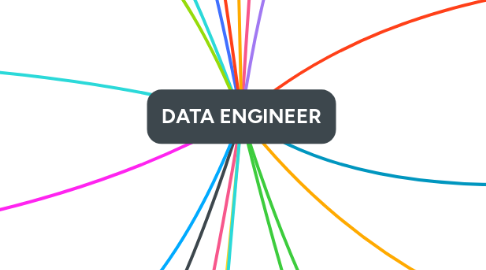
1. 6. Relational Database
1.1. MY SQL
1.2. PostgreSQL
1.3. Maria DB
1.4. Amazon Aurora
2. 5. Database Fundamentals
2.1. SQL
2.2. Normalisation
2.3. Acid Transactions
2.4. Oracle database
2.5. Microsoft SQL server
2.6. CAP theorem
2.7. OLTP vs OLAP
2.8. Horizontal vs vertical scaling
2.9. Dimensional modelling
3. 1. CS fundamentals
3.1. How does the computer work?
3.2. How does the Internet work?
3.3. Git — Version control
3.4. Basic Terminal usage
3.5. APIs
3.6. Data structures & algorithms
3.7. REST
3.8. Structured vsunstructured data
3.9. Serialisation
3.10. Linux
3.10.1. CLI
3.10.2. Vim
3.10.3. Shell scripting
3.10.4. Cronjob
3.11. Math & statistics
4. 2. Learn about Operating Systems
4.1. Linux
4.2. Mac OS
4.3. Windows
5. 3. Learn a programming Language
5.1. Jave
5.2. C++
5.3. Python
5.4. Scala
5.5. Go
6. 4. Testing
6.1. Unit testing
6.2. Integration testing
6.3. Functional testing
7. 14. Monitoring data Pipelines
7.1. Prometheus
7.2. Datadog
7.3. Sentry
7.4. StatsD
8. 13. Workflow Scheduling
8.1. Apache Airflow
8.2. Google Composer
8.3. Apache Oozie
8.4. Luigi
9. 11. Data processing
9.1. Batch
9.1.1. Apache Pig
9.1.2. Apache Arrow
9.1.3. data build tool
9.2. Streaming
9.2.1. Apache Kafka
9.2.2. Apache Storm
9.2.3. Apache Samza
9.2.4. Amazon Kinesis
9.3. Hybrid
9.3.1. Apache Spark
9.3.2. Apache Beam
9.3.3. Apache Flink
9.3.4. Apache NiFi
10. 10. Cluster computing Fundamentals
10.1. Apache Hadoop
10.2. HDFS
10.3. MapReduce
10.4. Lambda & Kappa 2 architectures
10.5. Managed Hadoop
10.5.1. Amazon EMR
10.5.2. Google Dataproc
10.5.3. Azure Data Lake
11. 9. Object Storage
11.1. AWS S3
11.2. Azure blob storage
11.3. Google cloud storage
12. 7. Non relational Database
12.1. Document
12.1.1. MongoDB
12.1.2. Apache CouchDB
12.1.3. Elasticsearch
12.1.4. Azure CosmosDB
12.2. Wide Coloumn
12.2.1. Apache Cassandra
12.2.2. Apache HBase
12.2.3. Google Bigtable
12.3. Graph
12.3.1. Neo4j
12.3.2. Amazon Neptune
12.4. Key - Value
12.4.1. Redis
12.4.2. Memcached
12.4.3. Amazon DynamoDB
13. 12. Messaging
13.1. Google PubSub
13.2. Amazon SNS & SQS
13.3. Azure Service Bus
13.4. RabbitMQ
13.5. Apache ActiveMQ
14. 8.Data warehouses
14.1. Snowflake
14.2. Presto
14.3. Apache Hive
14.4. Apache Impala
14.5. Amazon Redshift
14.6. Google BigQuery
14.7. Azure Synapse
14.8. ClickHouse
15. 16. Infrastructure as code
15.1. Containers
15.1.1. Docker
15.1.2. LXC
15.2. Containerorcehstrain
15.2.1. Kubernetes
15.2.2. Docker Swarm
15.2.3. Apache Mesos
15.2.4. GKE
15.3. Infrastructure Provisioning
15.3.1. Terraform
15.3.2. Pulumi
15.3.3. AWS CDK
16. 17. CI/CD
16.1. Github Actions
16.2. Jenkins
17. 15. Networking
17.1. Protocols
17.1.1. HTTP/HTTPS
17.1.2. TCP
17.1.3. SSH
17.1.4. IP
17.1.5. DNS
